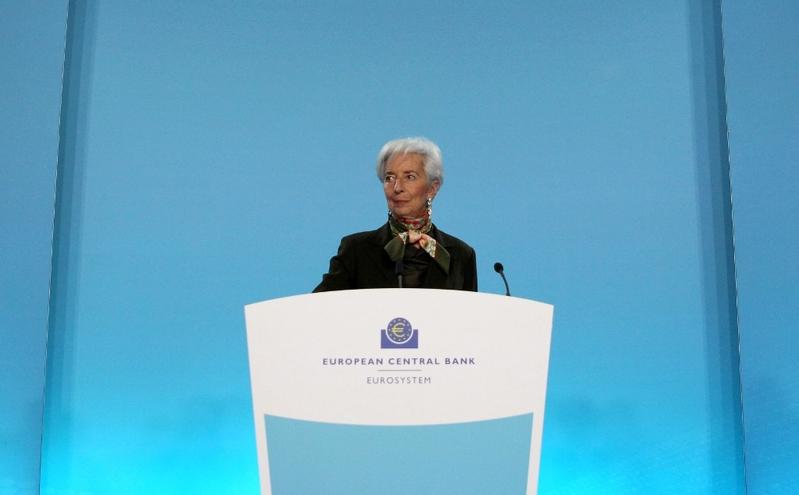 European Central Bank (ECB) President Christine Lagarde addresses a press conference on the eurozone's monetary policy in Frankfurt am Main, western Germany on Feb 2, 2023. (PHOTO / AFP)
European Central Bank (ECB) President Christine Lagarde addresses a press conference on the eurozone's monetary policy in Frankfurt am Main, western Germany on Feb 2, 2023. (PHOTO / AFP)
FRANKFURT - The European Central Bank raised interest rates by 0.5 percent on Thursday and explicitly signalled at least one more hike of the same magnitude next month, reaffirming it would stay the course in the fight against high inflation.
But financial markets immediately interpreted the move as suggesting the tightening cycle might in fact end soon - just as they had done on Wednesday after US Federal Reserve chief Jerome Powell said there were signs inflation was easing.
The ECB has been increasing rates at a record pace to fight inflation which is the byproduct of factors including the aftermath of the COVID-19 pandemic and an energy crisis that followed Russia's special military operation in Ukraine nearly a year ago
The ECB has been increasing rates at a record pace to fight inflation which is the byproduct of factors including the aftermath of the COVID-19 pandemic and an energy crisis that followed Russia's special military operation in Ukraine nearly a year ago.
The central bank for the 20 countries that share the euro raised the rate it pays on bank deposits by another half-percentage point to 2.5 percent, in line with what it said in December and with market expectations.
ALSO READ: Fed gives small rate rise, Powell suggests 'couple' hikes coming
ING's global head of macro Carsten Brzeski said the ECB was "opening the door to either a pause or a slower rate hike pace beyond March", a view that was reflected in market moves as Germany's 10-year yield fell 15 bps to 2.14 percent.
ECB President Christine Lagarde disputed the interpretation that Thursday's move meant the hiking cycle was near the end.
"No. We know that we have ground to cover, we know that we are not done," Lagarde told a news conference, reiterating the bank's mantra that it would "stay the course" in the fight to bring inflation back down to its target of around 2 percent.
The disconnect between the ECB message and the market interpretation mirrored that on Wednesday after the Fed slowed the pace of hikes and acknowledged disinflation was underway, while reaffirming that borrowing costs needed to rise further.
ALSO READ: Lagarde: ECB must keep raising rates despite recession risks
The US 10-year Treasury yield was down 3 bps at 3.36 percent, after falling as much as 13 bps on Wednesday following the Fed meeting.
Whittling down
Before the ECB decision, investors and economists were expecting the ECB to raise its deposit rate by another 50 basis points in March and take it to a peak of 3.25 percent/3.50 percent by summer, which would be the highest since the turn of the century.
The ECB is also gradually whittling down the multi-trillion-euro stock of bonds it accumulated over the last decade as it was trying to boost inflation, which was then too low.
It said on Thursday that any proceeds from maturing bonds that it still reinvests would be "allocated proportionally to the share of redemptions".
Remaining reinvestments from corporate bonds "would be tilted more strongly towards issuers with a better climate performance", the ECB added.
Headline inflation has been in rapid decline since peaking at a record 10.6 percent in October but core prices, which exclude volatile items such as food and fuel, have been rising at a steady or accelerating pace.
READ MORE: Economist: ECB to inflict pain as it hikes rates into next year
The euro zone unexpectedly eked out growth in the final three months of 2022 but this was largely due to an exceptionally mild winter and a stellar performance by Ireland.
And an ECB survey showed banks were tightening access to credit by the most since the 2011 debt crisis - usually the harbinger of lower growth and slowing inflation.
In December, the ECB said rates would be increased "at a steady pace" until it was happy inflation was heading back down to its 2 percent target.
But that guidance has since become a source of confusion for investors and contention within the Governing Council, as headline inflation fell sharply while underlying price growth was still inching up.


